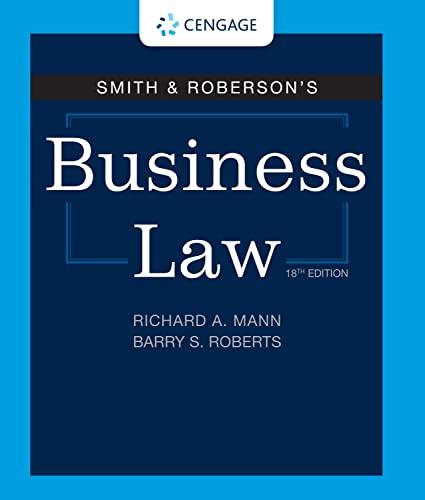Question
MEDIATION LAW SHORT ANSWERS 1. How and when should a mediator use active listening? 2. How and when should a mediator use reality testing? 3.
MEDIATION LAW SHORT ANSWERS
1. How and when should a mediator use active listening?
2. How and when should a mediator use reality testing?
3. What is the difference between reframing and reflecting? Discuss how and why these techniques are used in the mediation process. Give examples.
4. Is it the mediator's role to give advice? If not, why not?
5. Compare and contrast the concepts of positions and needs. Why is it important to establish underlying needs?
6. What are the main sources of power imbalance in a mediation? How can a mediator address these in an equitable manner?
7. What is the purpose of the private session and when should it be used?
8. Consider the following parties' opening statements and;
a. Give an accurate mediator's summary of the parties' opening statements as if you are speaking to the participants.
b. List the presenting issues and underlying needs of each party.
c. Formulate an agenda and write down what you will say as you map the agenda on the whiteboard.
Step by Step Solution
There are 3 Steps involved in it
Step: 1

Get Instant Access to Expert-Tailored Solutions
See step-by-step solutions with expert insights and AI powered tools for academic success
Step: 2

Step: 3

Ace Your Homework with AI
Get the answers you need in no time with our AI-driven, step-by-step assistance
Get Started


